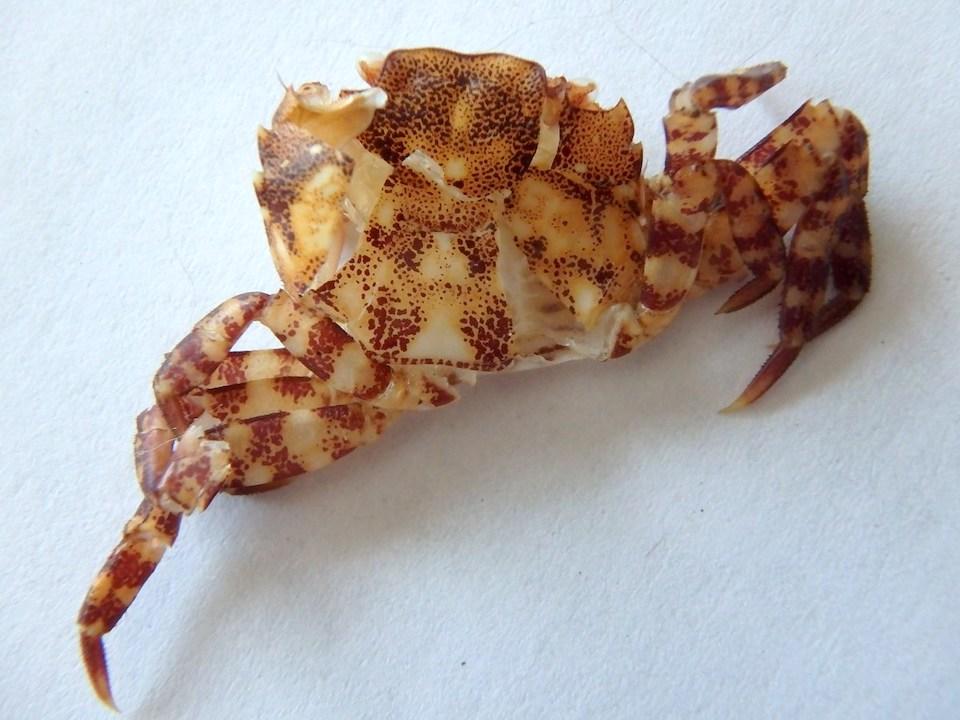
The molted shell of an Asian shore crab found in Acadia National Park/NPS, Alexa Pezzano
It was a startling, as well as grim, discovery: evidence of an invasive Asian shore crab was spotted in Acadia National Park in Maine by a middle school student.
The student made the discovery in an intertidal area near the edge of Little Moose Island in Acadia near Winter Harbor.
Peter Petraitis, professor emeritus at the University of Pennsylvania, confirmed that the student's discovery is the molted shell of an Asian shore crab (Hemigrapsus sanguineus), an invasive species from East Asia spreading into North America and Europe. He said the white banding on the legs is characteristic of the species, although the body tends to be darker when it is part of a living creature.
The native range of the crab, according to the U.S. Geological Society, is the western Pacific Ocean from Russia, along the Korean and Chinese coasts to Hong Kong, and the Japanese archipelago. One of the crabs was spotted back in 1988 at Cape May, New Jersey, the first reported occurrence in U.S. waters.
This species is now well established and exceptionally abundant along the Atlantic intertidal coastline of the United States from Maine to North Carolina. It is actively breeding and expanding its population within its nonnative range. Because the species is tolerant of a wide range of environmental conditions, it is likely that the invasion will continue along the US coastline.--USGS
This is believed to be among the first confirmed reports of the opportunistic omnivore within Acadia National Park. A molted shell means the animal that made it was likely still alive, scuttling around the area somewhere.
Because this species has a very broad diet, it has the potential to affect populations of native species such as crabs, fish, and shellfish by disrupting the food web. It also occupies habitats very similar to our native mud crabs, possibly overwhelming and dominating their habitat. This potential impact on native species populations may be a result of direct predation or competition for a food source. Hemigrapsus may compete with larger species, like the blue crab, rock crab, lobster, and the nonnative green crab. Recent trends show numbers of shore crabs are steadily increasing while native crab populations are declining. These opportunistic omnivores may also pose threats to coastline ecosystems and aquaculture operations.--USGS
The discovery occurred on Sept 19 on a Marine Investigations program that the student was attending during a Schoodic Education Adventure program for middle school students in grades 5-9. With continuing support from Friends of Acadia, the park has hosted residential education programming for more than 25 years.



Add comment